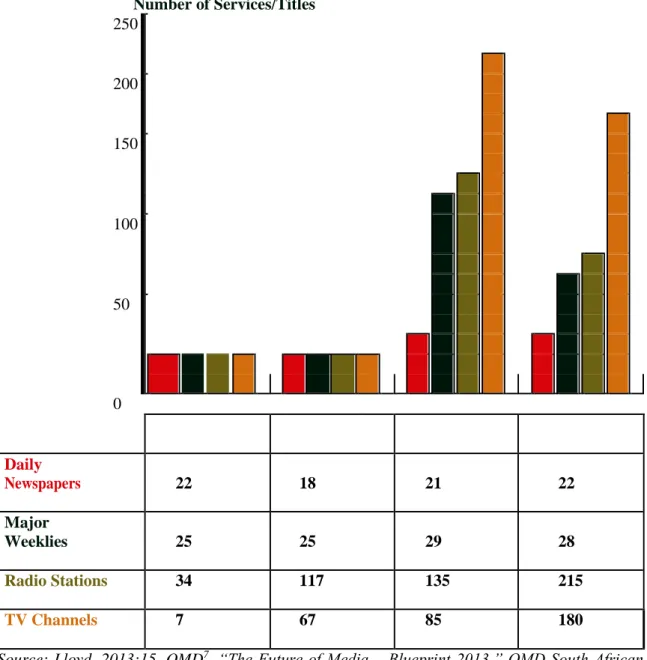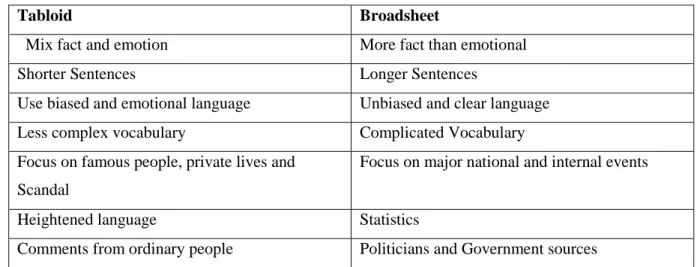INTRODUCTION AND BACKGROUND
LITERATURE REVIEW
This chapter presents a review of previous literature relating to representations of black African migrants in the press. This chapter thus reviews the relevant literature surrounding the representation of black African migrants in South African newspapers. It is important to highlight how past studies have addressed media representation of black African migrants in SA.
The media continues with biased reporting, labeling black African migrants with derogatory names (Crush and Pendleton, 2004: 17). The reports were still negative and stereotypical towards black African migrants (McDonald and Jacobs, 2005:301). The popular narrative about black African migrants in South Africa is that "they bring drugs".
Most media coverage of black African migrants has focused on their negative socio-economic impact. The media portrays black African migrants as taking advantage of citizen opportunities (Peberdy and Crush, 1998:1).
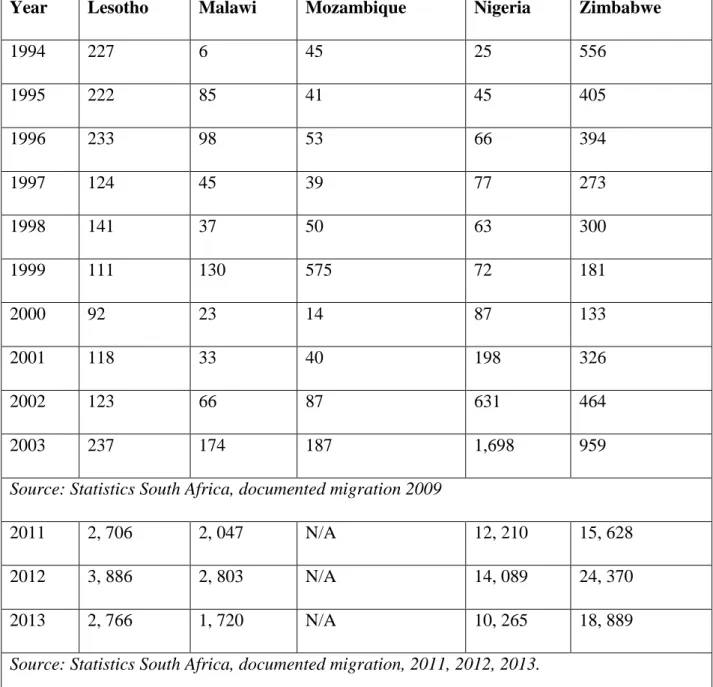
THEORETICAL FRAMEWORK
These words and phrases are means that carry meaning because they act as symbols that the media wants to convey (Hall. All depictions contain the perspective of the general population that created them (Stewart and Kowaltzke, 2007:36). This helps define an individual's society as opposed to another's, in-group versus out-group society, and the ability to differentiate from “others” (Christoph, 2012:99; Six and Schutz, 1996).
Basically, there are two types of stereotypes: “autostereotypes, which refer to the in-group and heterostereotypes of people related to an out-group” (‘the other’) (Dervin, 2011:186). One of the places where people learn stereotypes is the media, especially in newspapers and movies (Wood). Newspapers produce a negative stereotypical image of migrants in general as 'the other' (Van Dijk,.
Therefore, the study used this theory to reveal all the weaknesses of the studied newspapers in terms of creating negative stereotypes that can socially affect black African migrants. This theory is helpful in answering how black African migrants are labeled as foreigners, people who do not belong here in South Africa, invading the land that belongs to 'us' locals. For example, how two South African newspapers produce texts from a less dominant group in South Africa (black African migrants).
Part of such discursive semiotic inquiry is to investigate the implications drawn and ensnared in this propaganda, to be specific that the unemployed in Europe (which in the UK means European territory) are after British jobs, a suggestion semiotically communicated with the finger. showing UK audiences. It is also a joke in progress about migration and law cases that such migration is out of control. One of the most expressed and critical points of DHA is "demystifying" the authority of particular conversations by deciphering hidden belief systems (Wodak, 2015:4).
On the other hand, given the numerous implications of the expression “critical” in this particular situation, it is necessary to add further meaning. You know the one – the high jump competition, where the poor, stupid horse is brought into the ring, asked to clear a huge red wall, and as a reward for his heroic effort is promptly brought back and asked to do it all over again, only higher. Informed research on how media texts are framed with the discourse of the powerful.

METHODOLOGY
Such is the case in this study, which analyzes language to evaluate the representation of black African migrants in the South African press. The interpretive paradigm allows this study to see the world through observations and encounters of black African migrants through the Daily News and Daily Sun (De Vos et al., 2011:7). Therefore, this study did not use rigid approaches to understand the representation of Black African migrants.
However, it is important to note that the researcher's interpretation is socially constructed and critical of established narratives about black African migrants in South African newspapers. A qualitative methodological approach was therefore chosen as it enables the research to explain and describe the themes and categorization of black African migrants in the Daily News and Daily Sun newspapers. This method thus aimed to provide an in-depth understanding of the representation of black African migrants in the press.
For example, this study will use the language written in the newspaper to explain and understand how stereotypes and discrimination against black African migrants are communicated through the Daily News and Daily Sun. This study is qualitative in nature as it investigates how black African migrants are portrayed in the Daily News and Daily Sun newspapers. Relevant news articles were downloaded from the Daily Sun and Daily News online databases, and only news stories relating to or mentioning black African migrants were examined.
This enabled the researcher to advance a deeper understanding of how black African migrants are depicted in South African newspapers. Words, phrases, metaphors and idioms were analyzed to provide an in-depth analysis of the portrayal of black African migrants in the press. A critical discourse analysis of the representation of black African immigrants in the Daily News and Daily Sun is based on a selection of these 41 articles.
The aim is to obtain a solid and deeper description of the representation of Black African Migrants. The outcome of content analysis are concepts or classes that describe the portrayal of Black African migrants. Explanation of the qualitative study that collected data on the representation of black African migrants via content analysis with purposefully selected newspaper articles from Daily News and Daily Sun.
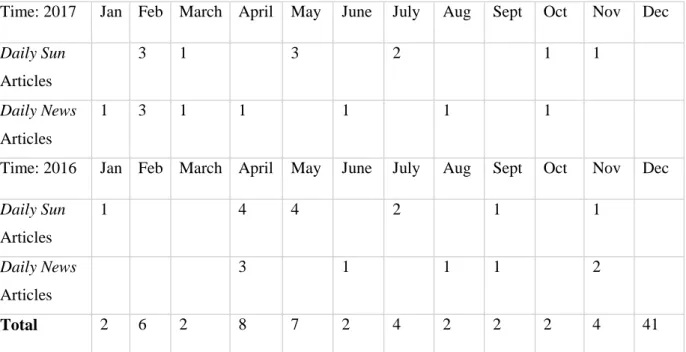
DATA PRESENTATION AND ANALYSIS
It is clear that black African migrants receive negative reviews in SA newspapers compared to other foreign nationals (Asians, Americans and Europeans). The press therefore often uses the word foreigner to describe black African migrants in the country. Due to the large number of black African migrants, this will make them feel out of place in South Africa.
There are certain keywords and phrases used by these two newspapers when writing about black African migrants in South Africa. The words in the table above are found in almost every news article studied that refers to black African migrants. When it comes to the issue of drugs, black African migrants are easily targeted by the press.
Consideration is centered around the waste, to make the presence of black African migrants ill-advised and risky. Such a story presents unbalanced information and constructs a negative image of black African migrants, particularly Zimbabweans in this case. The above story shows how journalists continue to cite sources that continue to contribute to the negative representation of black African migrants in South Africa.
They claimed that drug dens and houses of prostitution were their target... The Somali National Association, said that the attacks on foreigners were caused by some politicians in Johannesburg. This piece focuses on the tone and dialect style used to metaphorically portray black African immigrants in the press. The article sees the positive contribution of black African immigrants in the fields of education and medicine.
It is important to note that the press does report positively when it comes to black African migrants who are sports people. Newspapers play an important role in communicating information and shaping the image of black African migrants in SA. Furthermore, using the representation theory, the study noted that the negative coverage of black African migrants contributed to the xenophobic violence in South Africa.
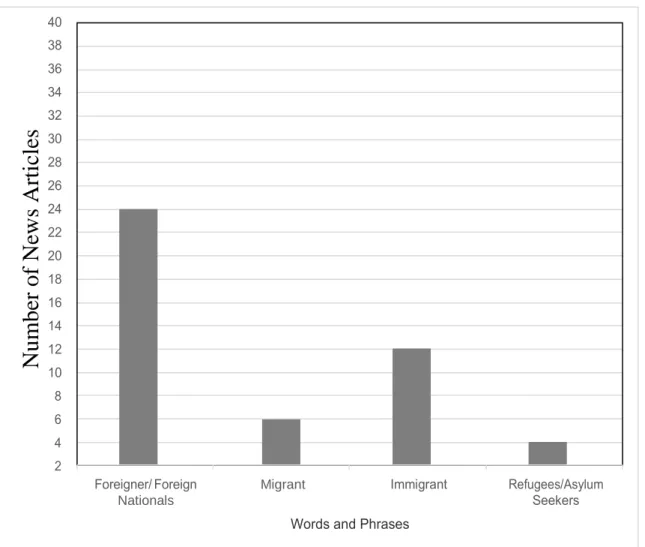
CONCLUSION TO THE STUDY
However, there are examples of positive representation of black African migrants in the press and the use of radical anti-migration metaphors, as found in previous studies, is not commonly used in the Daily News and Daily Sun (Kariithi et al. 2017, Mawadza and Crush 2010). ). The image of black African migrants in South Africa is still biased, especially in the post-apartheid era. The main reasons why the portrayal of black African migrants is negative and biased are the economic crises in the communities that lead the people to blame foreigners and the press to criminalize them.
The general structure of the discourses found in South African newspapers currently has the same meaning as these terms and the technical difference in the reporting and interpretation of the discourse seems to be neglected. The study departs from previous studies that have focused on xenophobic violence in the media by analyzing the language the press uses to report on black African migrants. The study also included positive newspaper stories that other studies did not consider.
The gender representation of migrants needs to be carefully examined, as women make up almost half of the world's migrants. 1996) Development of social categories and stereotypes in early childhood: the case of “Arab” concept formation, stereotypes and attitudes by Jewish children in Israel”. Information, representations and participation in the public sphere, Journal of Ethnic and Migration Studies, Vol 41 (6), pp 857-873.
The role of the mass media in the integration of migrants, International Mind, Brain, and Education Society Vol 6 (2), pp 97-107. The Foundations of Social Research: Meaning and Perspective in the Research Process, New York: Sage. 2015) Relevance of migration theories in identifying influencing factors for Nigerian and Zimbabwean migrants in South Africa.
PhD thesis, Cape Town: University of the Western Cape. 2010), Metaphors of Migration: Zimbabwean Migrants in the South African Media. Print Media in Kenya: Representation of Ethnic Somalis in the Age of Terrorism, Journal of Somali Studies, (4)1. Revealing Race: An Analysis of the Coverage of Race and Xenophobia in the South African Print Media.
I took everything to the bathroom and there were no rounds in the firearm. According to the country's White Paper on International Migration: "The current average of 62,000 asylum applications per year means that South Africa is the largest recipient of individual asylum seekers in Africa".

